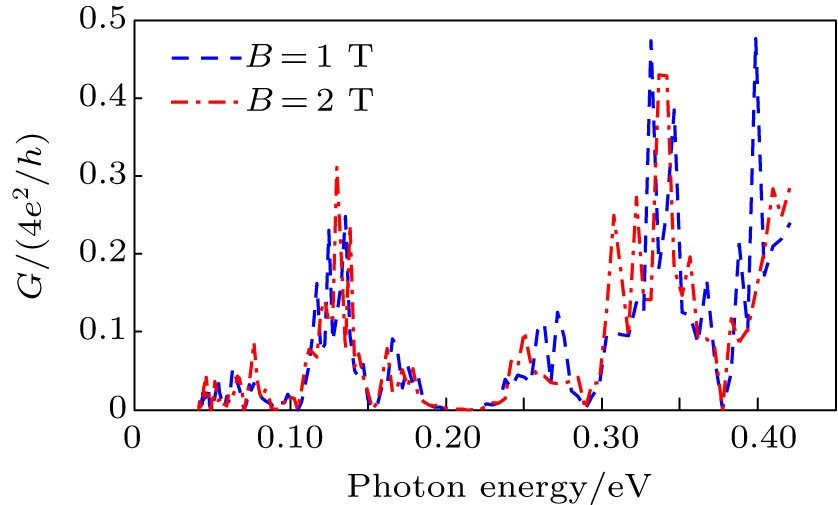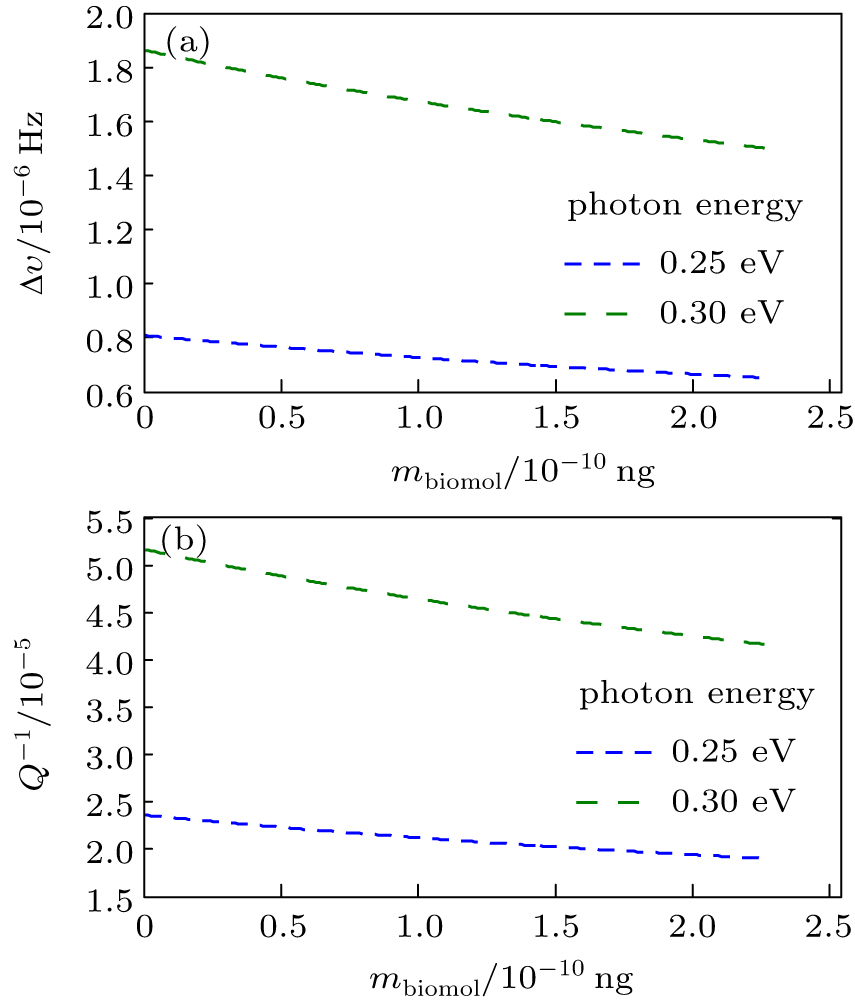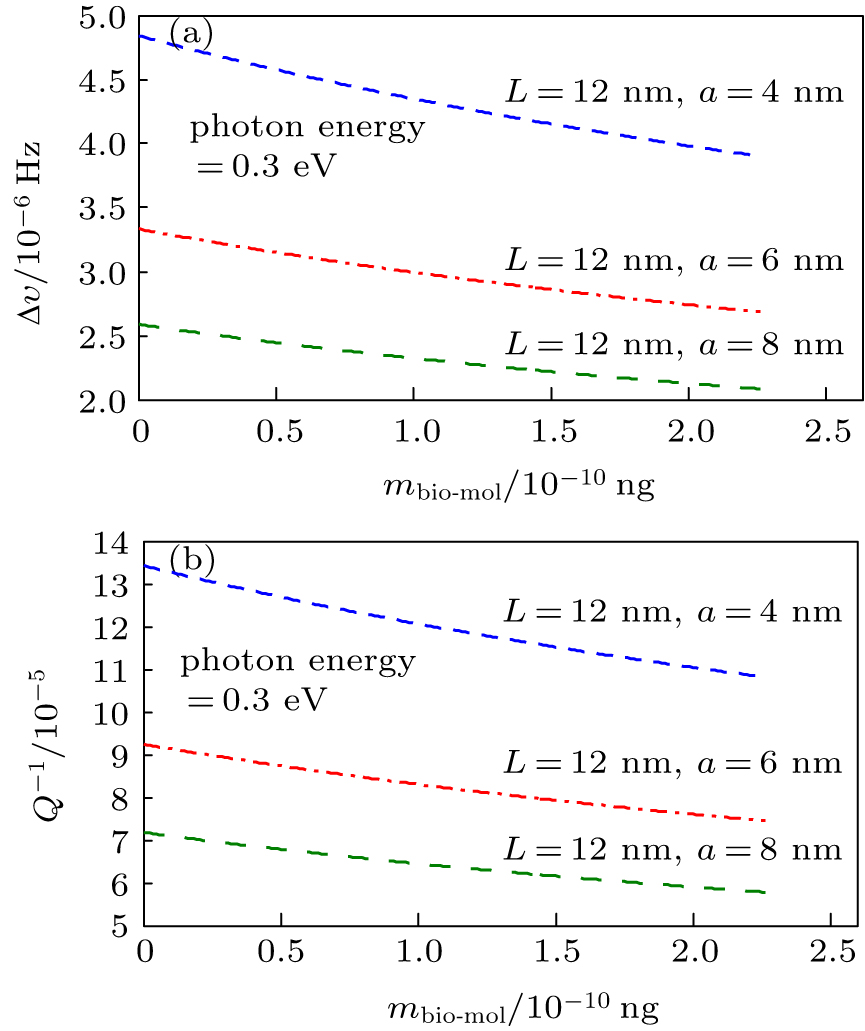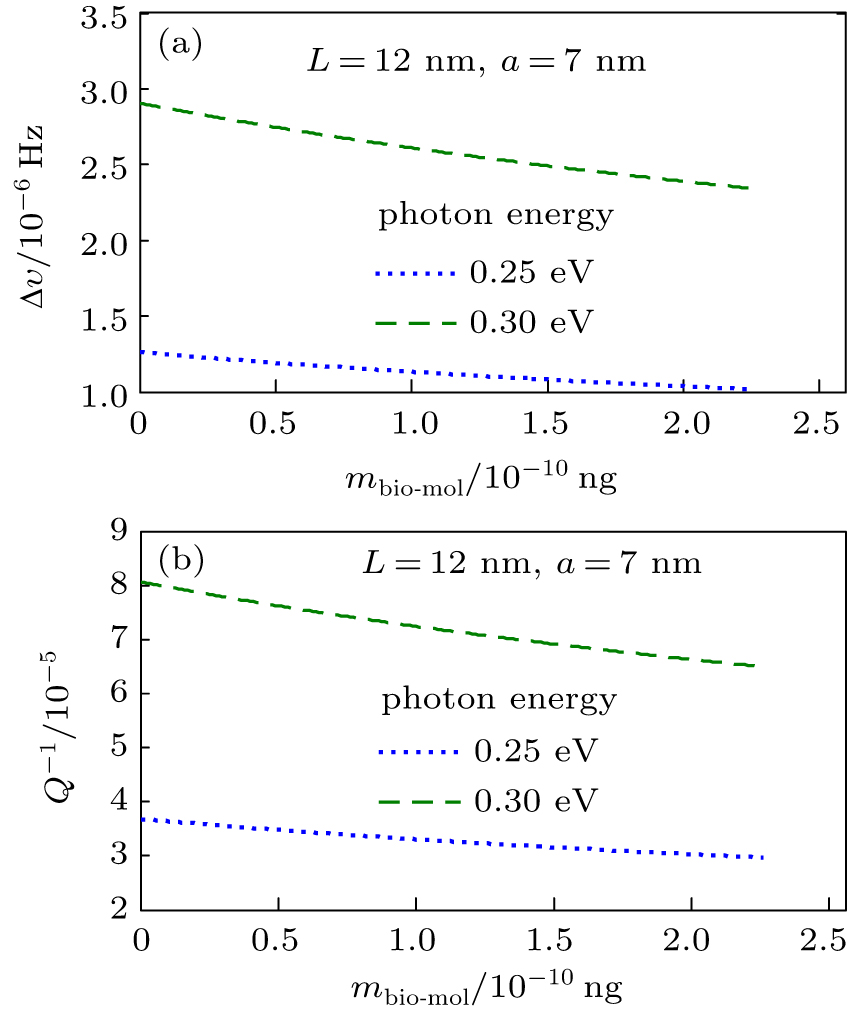† Corresponding author. E-mail:
The use of single walled carbon nanotube-based nanoelectromechanical system (NEMS) resonator to sense the biomolecules’ mass is investigated under the influence of an external ac-field. A single walled carbon nanotube (SWCNT) cantilever has been proposed and studied if the mass is attached at the tip or various intermediate positions. The shift of the resonant frequency and the quality factor have been investigated and show high sensitivity to the attached mass of biomolecule and its position. The proposed SWCNT-based NEMS resonator is a good candidate for sensing and tracing biomolecules’ mass as concentration of acetone in human exhale, resulting in a painless, correct, and simple diabetics’ diagnosis.
Strides throughout nanotechnology resulted in novel tools which enhance fields of sensors and electronics. New engineered materials offer novel properties that enhance state-of-the-art components in cost, speed, power consumption, sensitivity, and density on chip.[1–7] single walled carbon nanotubes (SWCNTs) have attracted considerable attention for the last two decades.[8,9] Their unique mechanical, electrical, and optical properties have made them an attractive candidate for many applications.[10,12,13] Recently, mechanical properties of carbon nanotubes (CNTs) have inspired research.[14,15] Although applications focus primarily on bulk tensile strength, the low mass combined with the record Young’s modulus about 1.2 TPa also results in extremely large increase in resonance frequency of SWCNT resonators.[16–20] CNTs are, also, expected to have major impact on several nanoelectromechanical system (NEMS) applications.[21–25]
NEMS technologies made it possible to detect physical quantities sensitively, such as spin,[21,26,27] molecular mass,[28–35] quantum states,[36] thermal fluctuation,[37] coupled resonance,[38,39] and biochemical reactions.[40,42] Also, NEMS technologies have allowed the rapid, reliable, and label-free detection of specific disease-related molecules, suggesting their potential in specific diseases early diagnosis such as cancer.[43–46] These impact values of NEMS offer motivations to proceed the investigation on the use of single walled carbon nanotube based NEMS resonator to sense trace acetone concentration in human exhale, resulting in a simple, reliable, and painless diabetics breath diagnosis.
The previous literature results[47] emphasized that the quality factor and resonant frequency shift of the proposed NEMS device are highly sensitive to the dimensions (length and diameter) of the SWCNT. The authors of Ref. [47] investigated the case when the biomolecule is only at the tip of the cantilever. Now, it is interesting to investigate the case when the biomolecule is at various intermediate positions along the SWCNT cantilever’s length. There are four sections in this paper: the introduction, the theoretical model and its formalism, the numerical results for the proposed SWCNT based NEMS, and conclusion.
The proposed model is a SWCNT cantilever acting as an NEMS resonator device which uses two leads in coupling with electronic transport. The influences of the induced ac-field and magnetic field are considered in the electron tunneling in the proposed device. Additional tunneling channels are induced when the carriers exchange energy with photons of energy ℏω from the induced ac-field of frequency ω, which represent photon-assisted tunneling.[48]
Figure


The first case in which the biomolecule is attached at the tip of the SWCNT cantilever (see Fig.


The second case in which the biomolecule is concentrated at any point along the SWCNT cantilever (see Fig.


In Fig.


The expression of ΓwithPhoton has been derived by applying boundary conditions to the eigen-functions obtained through solving Dirac equation[55,56] as




The proposed biomolecule sensor based on the SWCNT system will be analyzed numerically for two cases; the biomolecule is positioned at the tip of the SWCNT cantilever in the first case, and in the second case, the biomolecule is at various intermediate positions. Acetone molecule is the aim of this investigation as the diabetic patients’ exhale contains it.[51,57] And any biomolecule of the same mass rang would give consistent results.
The parameters in Eq. (
Figure
 | Fig. 2. The behavior of conductance, G, with photon energy at various magnitudes of the applied magnetic field. |
(i) Results for the first case when the biomolecule is positioned at the tip of the SWCNT cantilever: the Young’s modulus of CNT is equal to 1.0× 1015 ng/nm⋅s2 and its density ρ = 1.4× 10−12 ng/nm3.[47,51,56,57]
Figure
 | Fig. 3. The behavior of (a) resonant frequency shift Δυ and (b) the inverse of the quality factor, (1/Q), versus the mass of the biomolecule at various photon energies. |
Figure
(ii) Results for the second case when the biomolecule is at various intermediate positions on the SWCNT cantilever.
Figure
 | Fig. 4. The behavior of (a) resonant frequency shift Δυ and (b) the variation of (1/Q) with mbio-mol at different a. |
Figure
In order to confirm the effect of the photon energy of the induced ac-field on both quality factor Q and resonant frequency shift Δυ, the calculations are performed for the case when a = 7 nm, that is, 58 % of the total length L = 12 nm. The results are shown in Figs.
SWCNT based sensor is investigated under effect of induced ac-field’s photons in the infrared region. The case of mass sensing studied is the biomolecule acetone which exists in the diabetic patients’ exhale. Results illustrate that the quality factor and change in resonant frequency are delicate to the attached biomolecule mass and its position. Also, the induced ac-field affects on both quality factor and change in resonant frequency. So, the SWCNT based nanoelectromechanical resonator could be used to sense acetone molecules and consequently for diabetes diagnosis.
| [1] | |
| [2] | |
| [3] | |
| [4] | |
| [5] | |
| [6] | |
| [7] | |
| [8] | |
| [9] | |
| [10] | |
| [11] | |
| [12] | |
| [13] | |
| [14] | |
| [15] | |
| [16] | |
| [17] | |
| [18] | |
| [19] | |
| [20] | |
| [21] | |
| [22] | |
| [23] | |
| [24] | |
| [25] | |
| [26] | |
| [27] | |
| [28] | |
| [29] | |
| [30] | |
| [31] | |
| [32] | |
| [33] | |
| [34] | |
| [35] | |
| [36] | |
| [37] | |
| [38] | |
| [39] | |
| [40] | |
| [41] | |
| [42] | |
| [43] | |
| [44] | |
| [45] | |
| [46] | |
| [47] | |
| [48] | |
| [49] | |
| [50] | |
| [51] | |
| [52] | |
| [53] | |
| [54] | |
| [55] | |
| [56] | |
| [57] | |
| [58] | |
| [59] | |
| [60] | |
| [61] | |
| [62] | |
| [63] | |
| [64] | |
| [65] |



